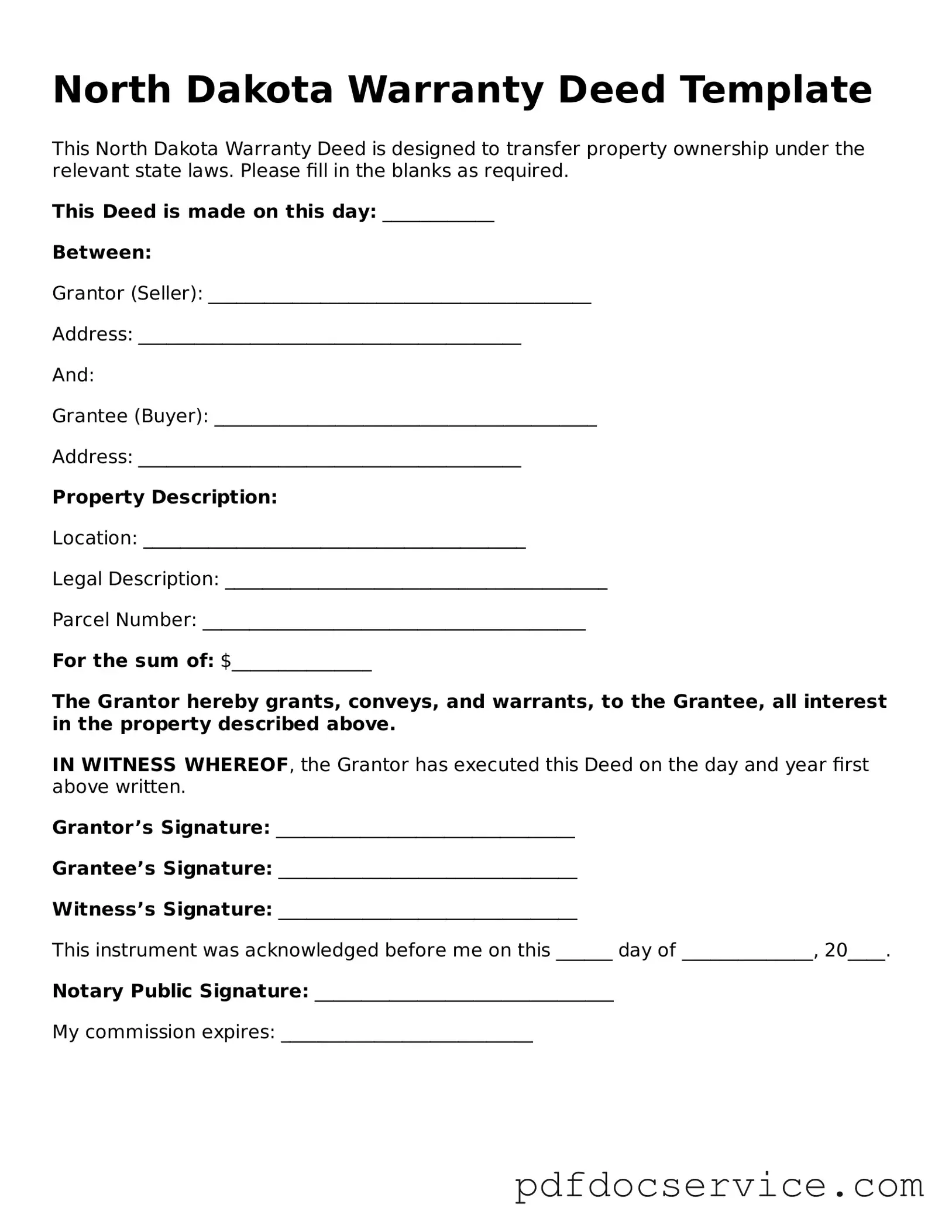A North Dakota Deed Form is a legal document used to transfer ownership of real property from one party to another. It serves as proof of the transaction and outlines the details of the transfer, including the names of the parties involved, the property description, and any conditions of the transfer.
What types of deeds are available in North Dakota?
North Dakota recognizes several types of deeds, each serving a different purpose. The most common types include:
-
Warranty Deed:
Offers the highest level of protection to the buyer, guaranteeing that the seller holds clear title to the property.
-
Quitclaim Deed:
Transfers whatever interest the seller has in the property without any guarantees. It's often used in transactions between family members.
-
Grant Deed:
Similar to a warranty deed, but provides fewer guarantees regarding the title.
Who needs to sign the deed?
Typically, the deed must be signed by the seller (grantor) transferring the property. In some cases, the buyer (grantee) may also need to sign. It's important to ensure that all parties involved in the transaction are properly identified and sign the document to validate the transfer.
Do I need to have the deed notarized?
Yes, in North Dakota, the deed must be notarized to be legally effective. A notary public will verify the identities of the signers and witness the signing of the document. This step helps to prevent fraud and ensures that the transaction is legitimate.
How do I file the deed after it’s signed?
Once the deed is signed and notarized, it must be filed with the county recorder's office where the property is located. This filing makes the transfer of ownership a matter of public record. Be sure to check with your local county office for specific filing requirements and fees.
Is there a fee for filing the deed?
Yes, there is typically a fee associated with filing a deed in North Dakota. The amount may vary by county, so it's best to check with your local county recorder’s office for the exact fee structure. Additionally, there may be other costs involved, such as transfer taxes, depending on the value of the property.
Can I prepare the deed myself?
Yes, you can prepare a North Dakota Deed Form yourself, but it’s important to ensure that all legal requirements are met. If you're unfamiliar with the process, consider seeking assistance from a legal professional or a document preparer to avoid any potential issues.
When preparing a North Dakota Deed Form, include the following information:
-
The names and addresses of the grantor (seller) and grantee (buyer).
-
A legal description of the property being transferred.
-
The date of the transfer.
-
Any conditions or restrictions on the transfer, if applicable.
What happens if I make a mistake on the deed?
If you make a mistake on the deed, it may lead to complications in the property transfer. In many cases, a corrected deed can be filed to address the error. However, it's advisable to consult with a legal professional to determine the best course of action and ensure that the deed is properly executed.
